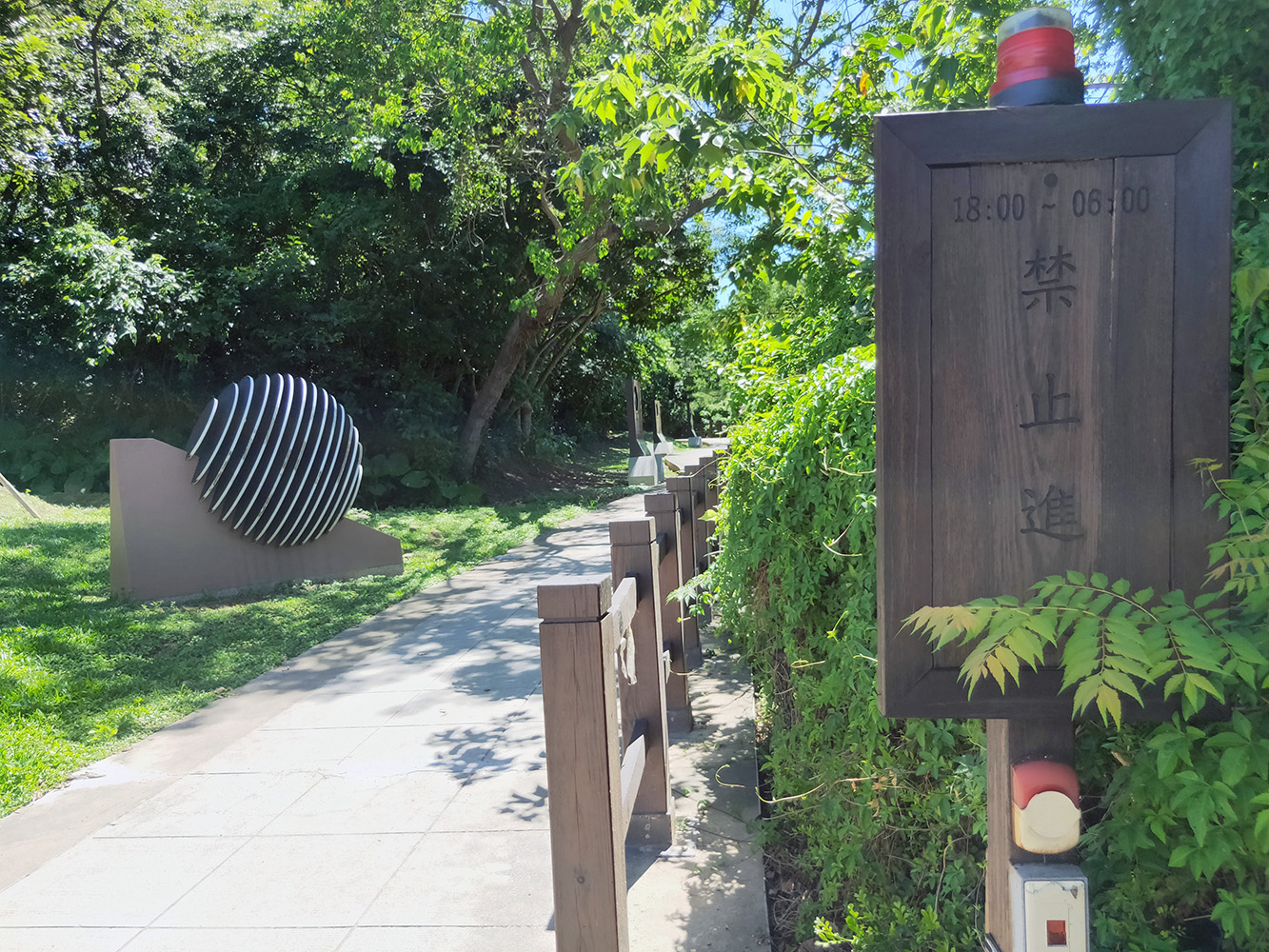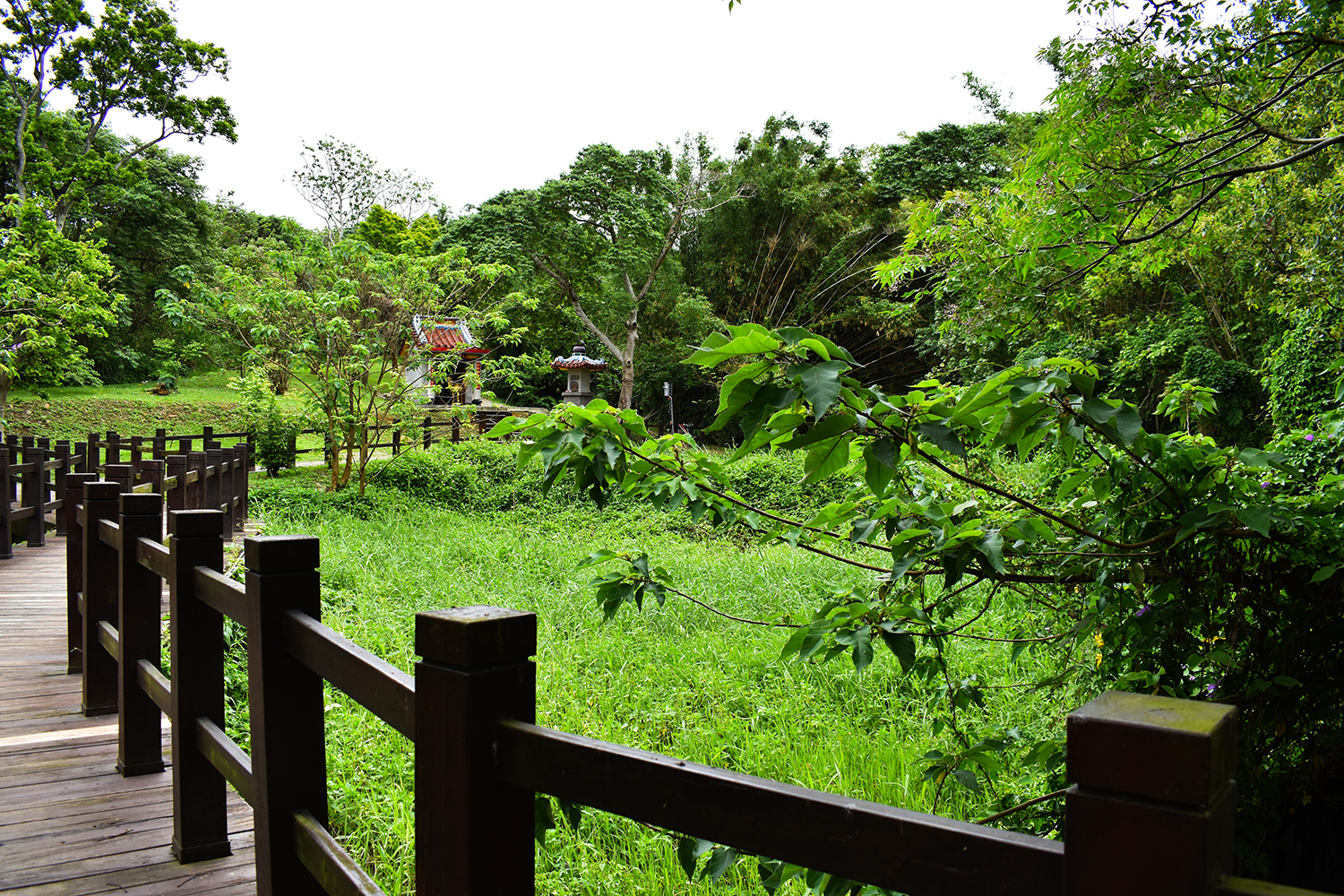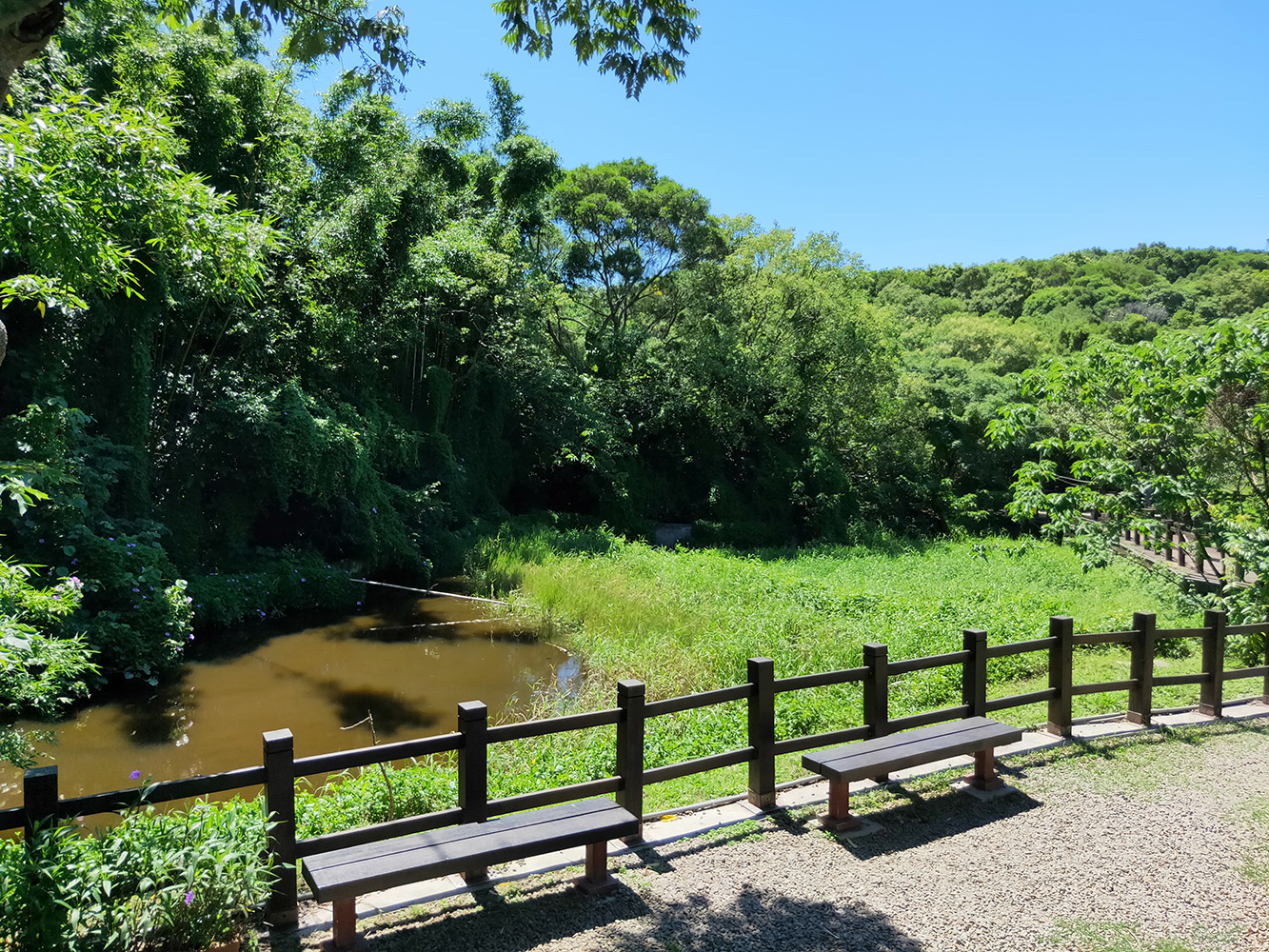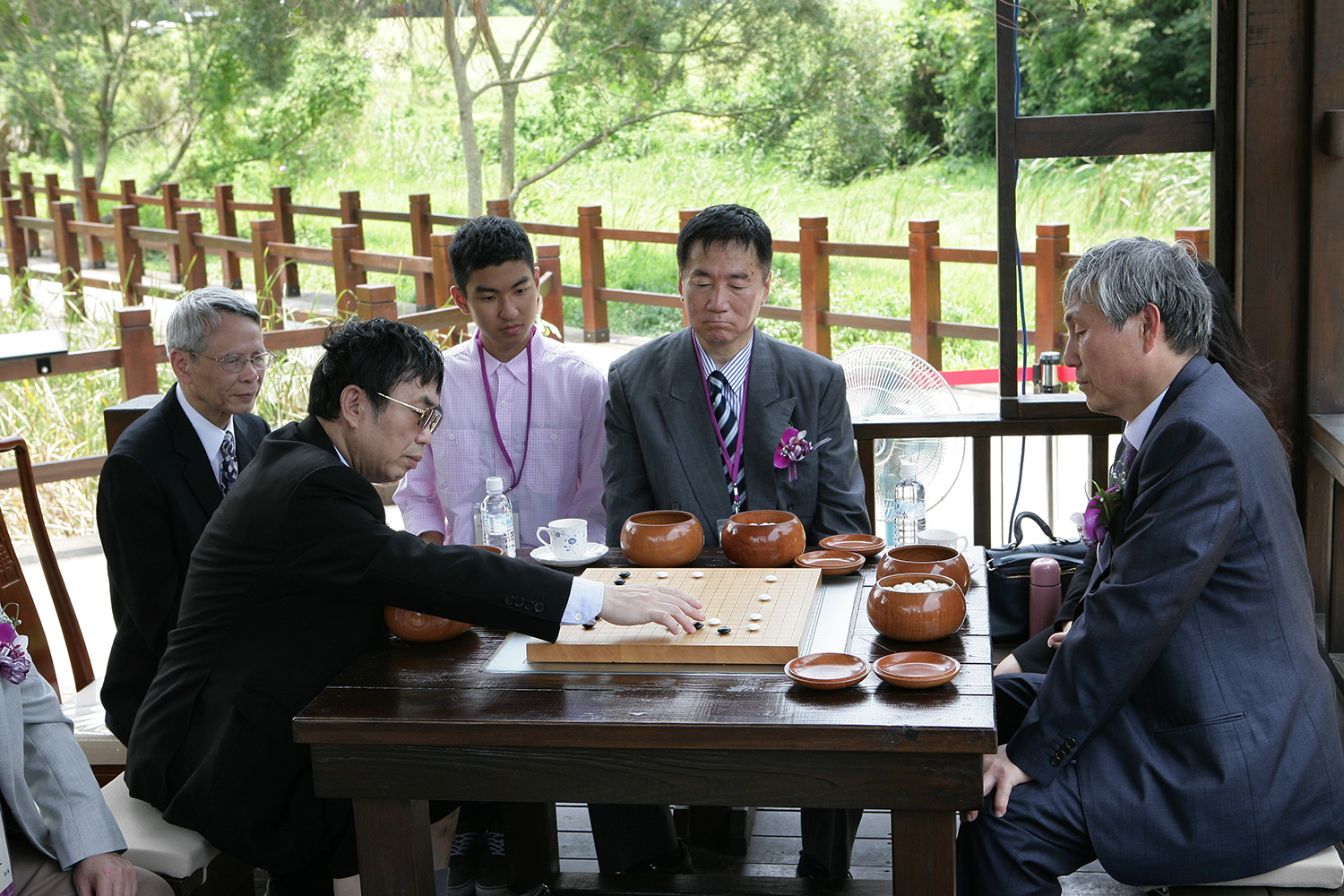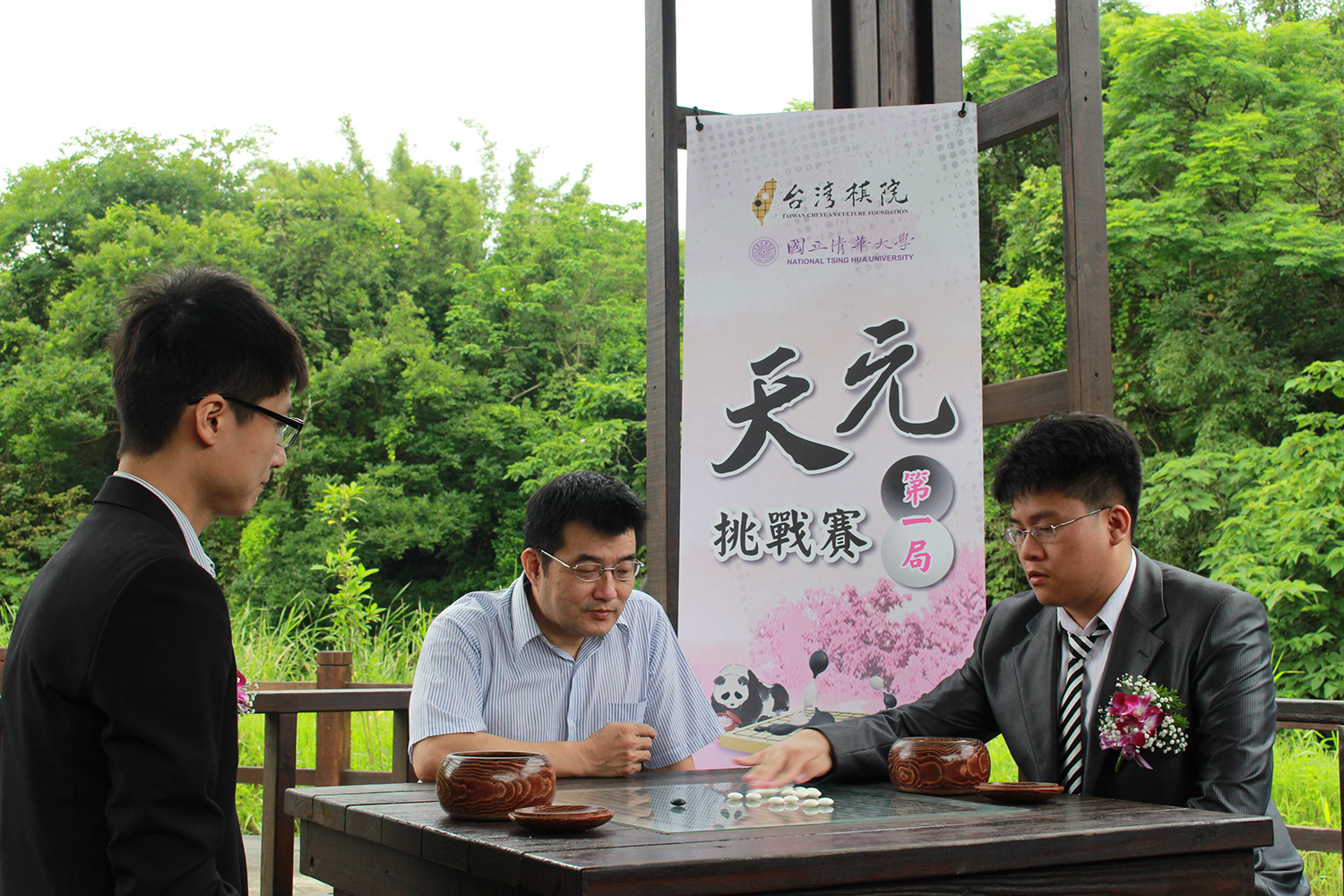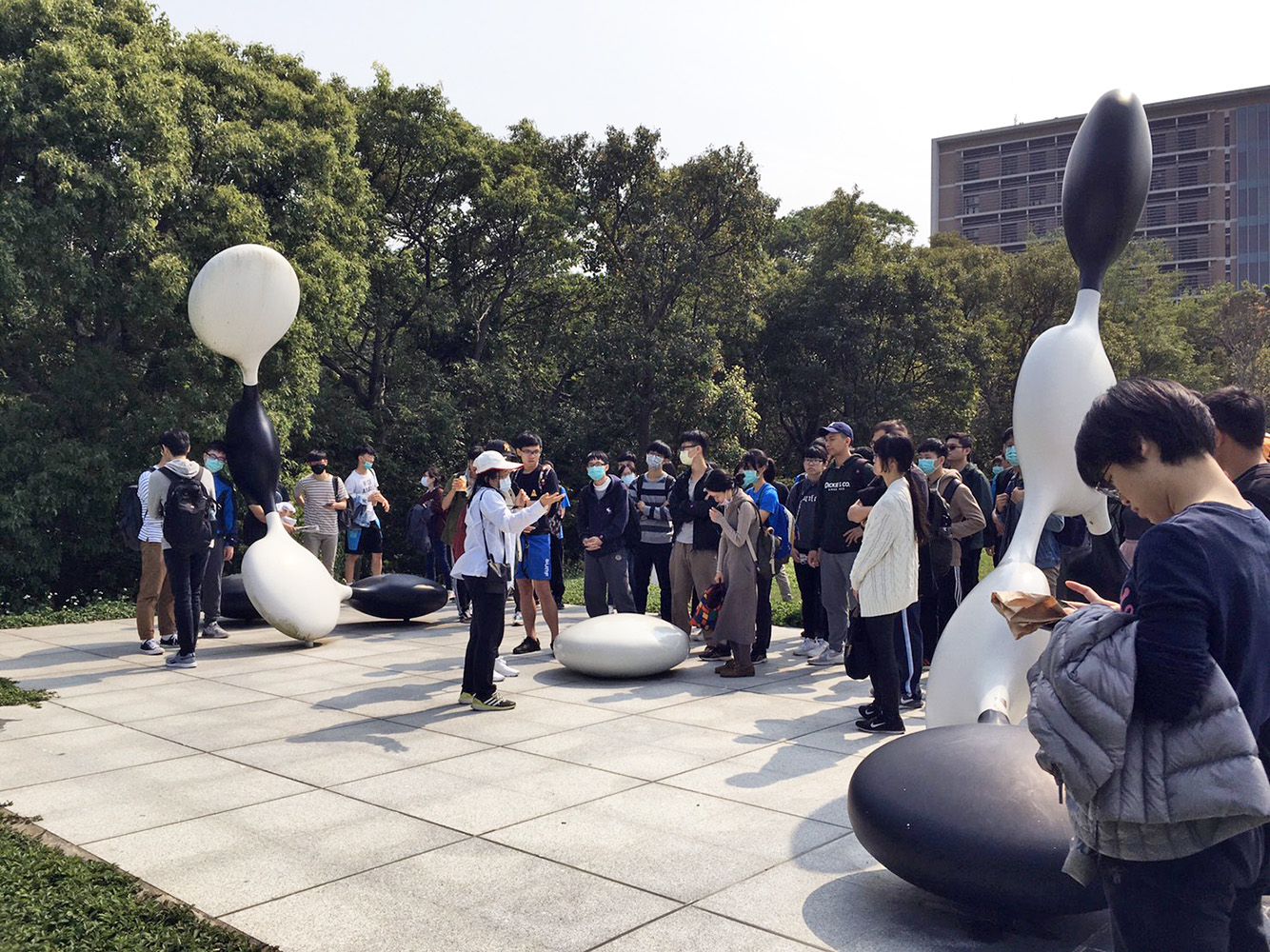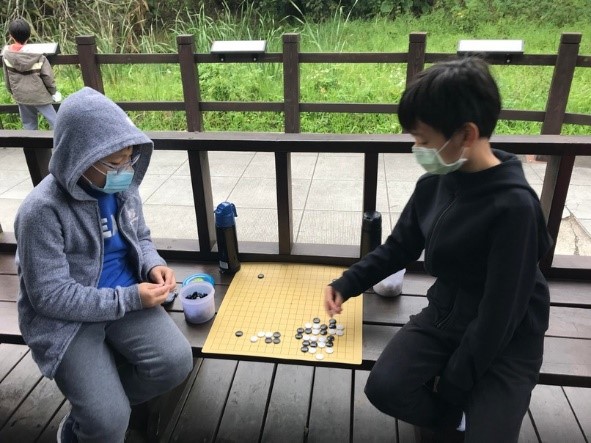從一個夢,蛻變為一座夢幻的「逸」園
Transforming a dream into a garden of leisure
奕園外觀簡單樸實,然而要興建這樣一座與自然融合,兼具圍棋內涵、藝術氣息的園子,過程卻一點也不簡單。三方要素的整合已提高複雜度,何況校方及計畫團隊還必須與時間賽跑,希望能及早完成臥病在床的沈校長其平生心願。
為此眾人彼此分工,一路馬不停蹄地討論、籌畫,仍堅持依據相關辦法規定須有的規格和流程進行,更增添了許多細節設計,務求奕園內涵的完整性。如此高難度的挑戰,清華團隊最後卻僅以約一年的期程即告功成,相較於國內其他公共藝術計畫少則歷時2年,多則7年的執行時程,成果及效率均十分驚人,實屬罕見。
另一方面,為避免影響生物棲息,奕園設置計畫中特別禁止夜間照明與避免聲響裝置,使得「對奕‧對藝」成為清華首件不需在計畫中提列照明規劃的公共藝術裝置。開幕之後校方亦明定晚間6點後禁止入園,除人身安全考量外,也盡力維護自然界生物原有的作息。時至今日,奕園園區依舊保有良好的生態及物種多樣性,經常可見如大小白鷺、候鳥或五色鳥,和各種蛙類的蹤跡,以及構樹、相思樹等樹種。
鬱鬱蔥蔥的景色裡,其實蘊含了多樣性的植物群,你認得幾種呢?
有別於新建物的增設往往是加法,奕園則採取減法,秉持了沈校長「少用水泥」的初衷,以簡樸、尊重自然生態為要,也為清華保留了更多的綠地及豐富物種,其與蝴蝶園等清華為生態保育所做的努力,匯集連結成了南校區的綠意盎然,生機勃勃,也成為新竹—這個廣廈櫛比鱗次的科技城市裡,彌足珍貴的後花園。
以大型公共藝術作品「對奕‧對藝」為視覺焦點,由此形塑而成的奕園,古樸寧靜之中散發著平易可親的氛圍特質,此處是校內通識課程進行藝術導覽、校外圍棋教室等棋藝團體參訪教學的最佳場域,並提供了清華師生和一般民眾休閒散心,接觸自然的慢活動線;而在南校區大草坪上的「對奕‧對藝」,則一早便可見民眾於基地平台上打太極、做早操,盡情沐浴在晨光和寬闊的天地之間,不只是人與自然,也是人與藝術的相契融合。
奕園雖低調簡樸,卻是人類及生態和諧共存的夢幻「逸」園。奕園之美,不僅在可見的風景,更有隱藏其中,看不見卻能心領神會的情深意更長。
Transforming a dream into a garden of leisure
In spite of the Go Garden's simple appearance, creating a space in which Go, art, and nature are seamlessly integrated was no easy task. Moreover, the Garden—Shen's lifelong dream—had to be completed as soon as possible, lest he pass away prior to its completion.
On top of this, it was necessary to strictly adhere to the design specifications and various relevant regulations. Despite the challenging nature of the project, the planning committee decided that the Go Garden should be completed within one year; by comparison, public art projects in Taiwan generally require between two and seven years to be completed.
Unlike most of the public art on the NTHU campus, and the Go Garden are not illuminated at night. This is because they are located in an ecologically sensitive wetland, and artificial lighting would have an adverse effect on the wildlife living there. In addition, loud noise is prohibited and entry in not allowed after 6 p.m., both for safety reasons and for maintaining the ecological balance of the area. As a result, the Go Garden continues to host a wide variety of wildlife, including egrets, migratory birds, Muller's barbet, and various frog species; amongst the garden's many trees are a large number of mature paper mulberries and Taiwan acacias.
In accordance with Shen's original plan, the use of concrete was kept to a minimum, and the Garden's sparse design creates a zen-like ambience in which Go, art, and nature blend in harmony. The south side of campus is also home to the Butterfly Garden, and this area has become a delightful oasis of lush greenery and thriving wildlife in the midst of the city.
With as it's visual focus, the unassuming Go Garden exudes a tranquil and inviting aura, and has become a regular venue for Go instruction and general education courses in art appreciation, as well as a favorite place for relaxing and enjoying nature. In addition, the platform on which Confrontation, Conversation is mounted has become a favorite place for taiqi and morning calisthenics, presenting a harmonious fusion of humanity, nature, and art, all bathed in the soothing rays of the gentle morning sunlight.
With its low-key charm, the Go Garden provides visitors with a convenient opportunity to experience the harmony and balance of nature. In addition to the overt visual appeal of its sparse layout, the Go Garden exudes a certain kind of hidden beauty, beyond the eye, but clearly sensed by the heart.

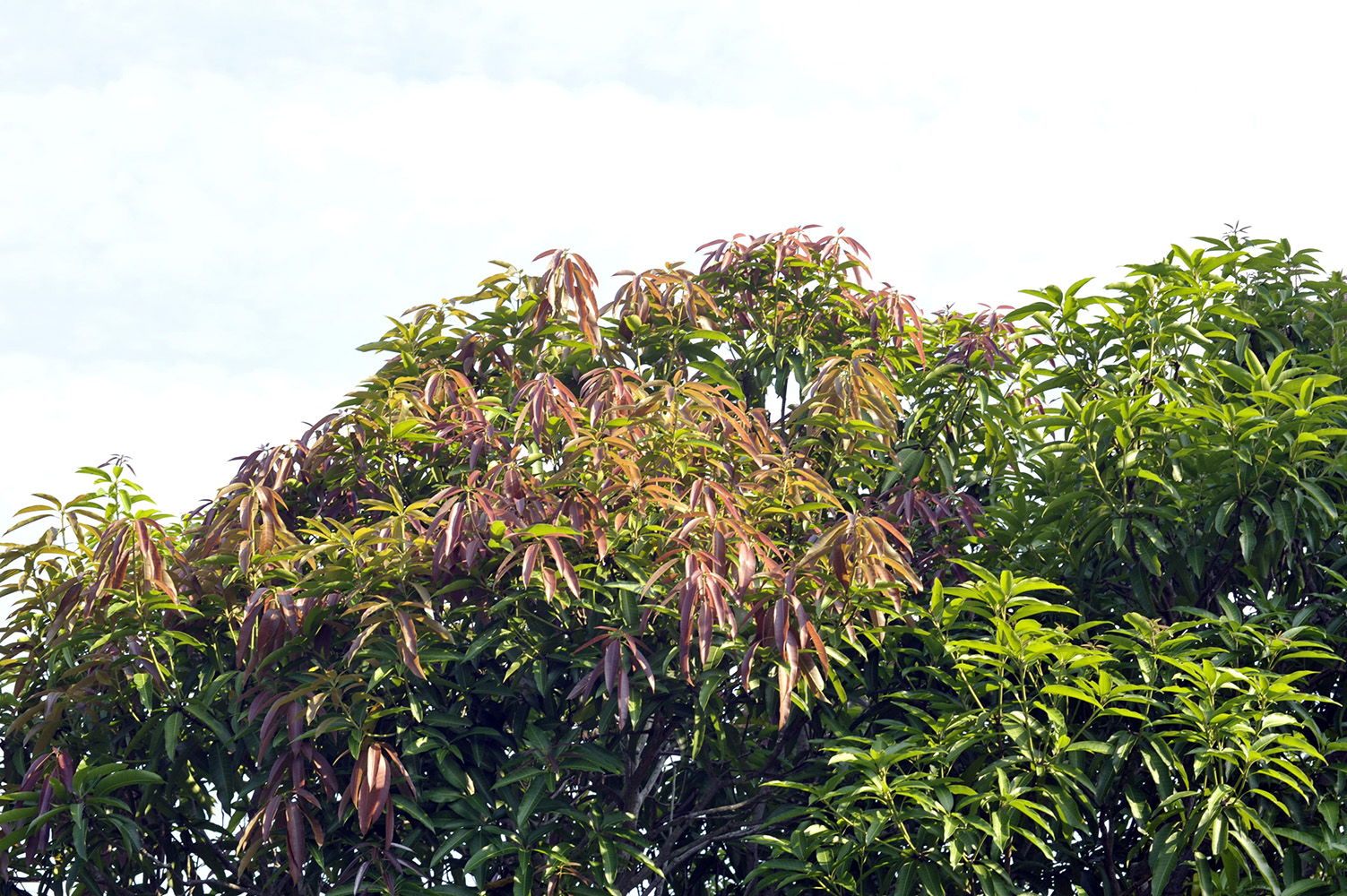 檬果
檬果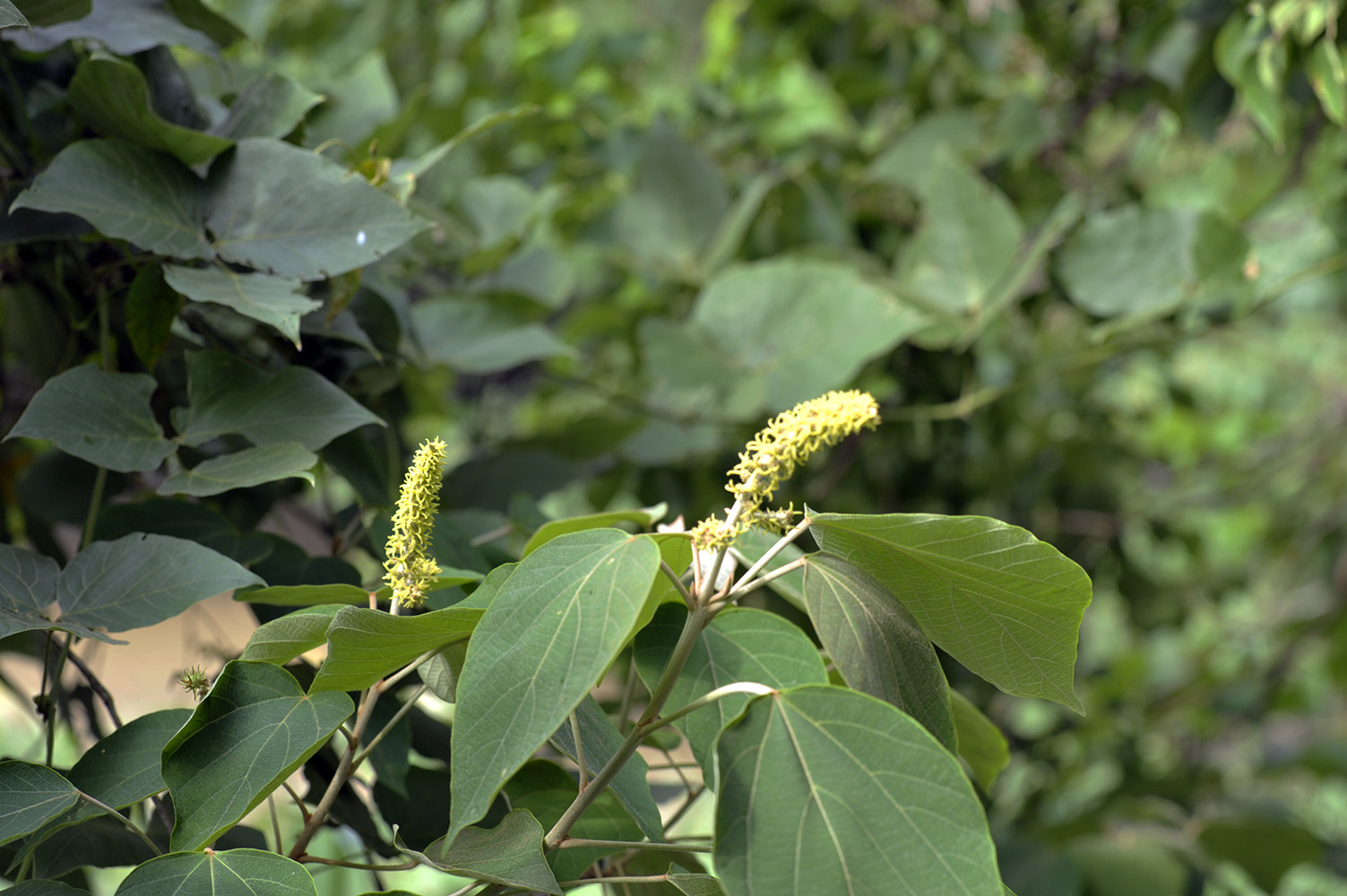 烏臼
烏臼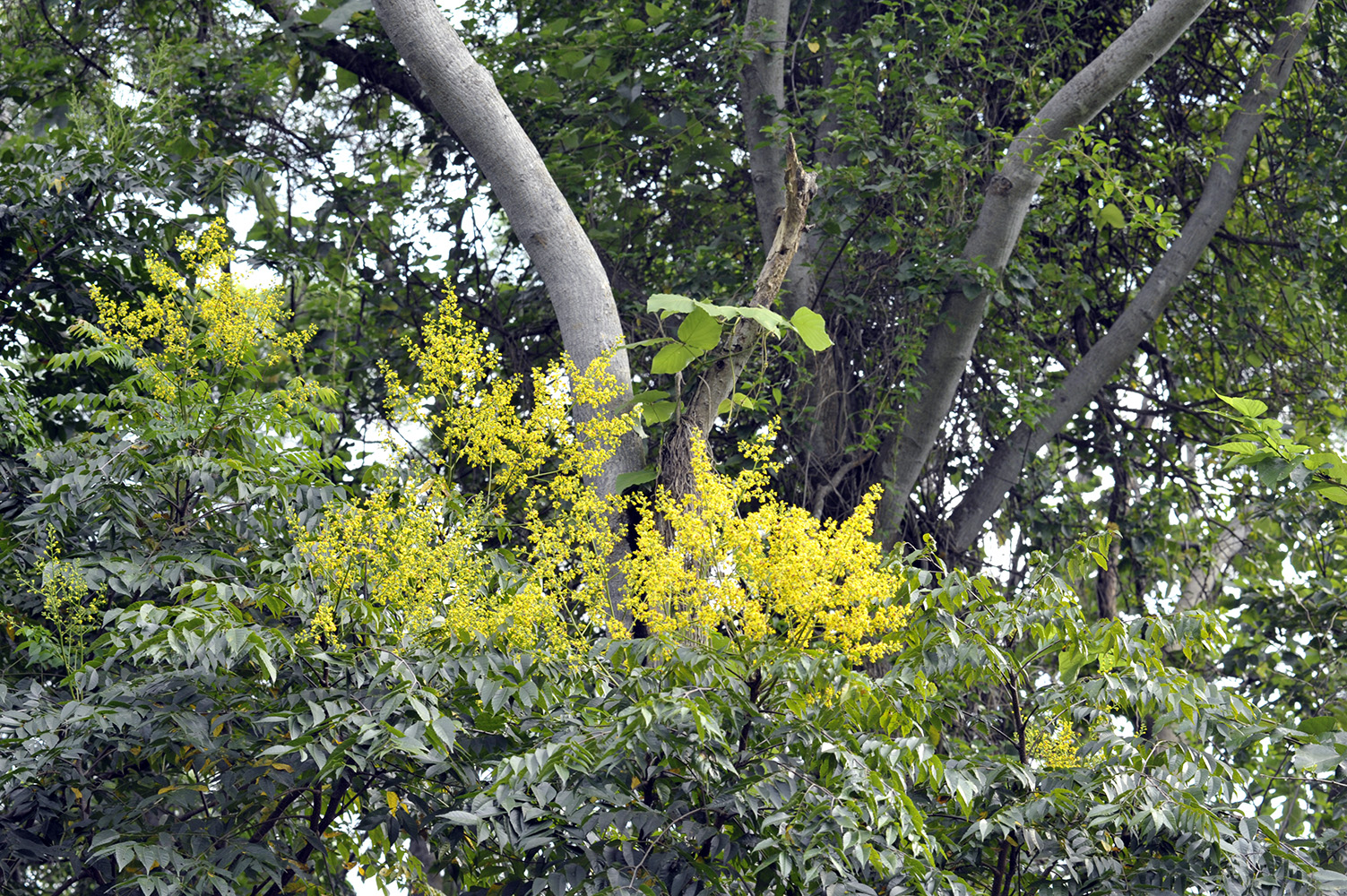 台灣欒樹
台灣欒樹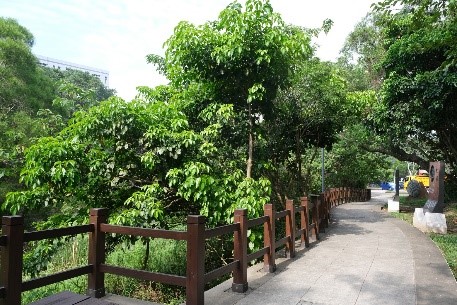 茄苳樹
茄苳樹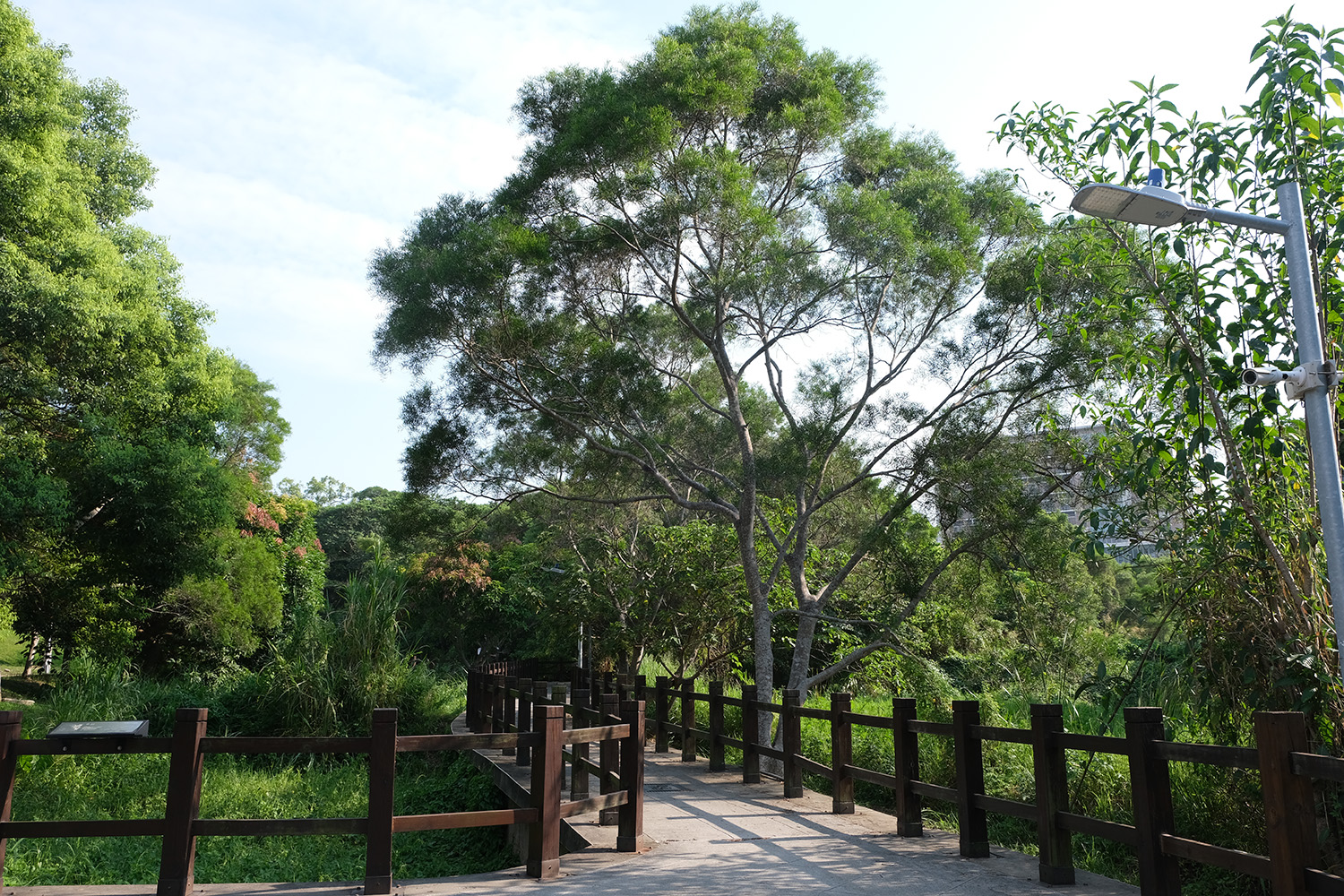 相思樹
相思樹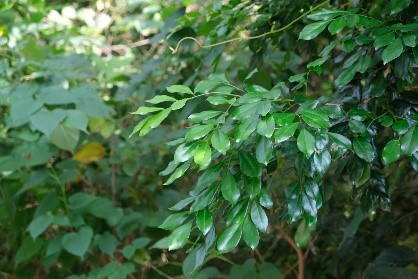 月橘(七里香)
月橘(七里香)
